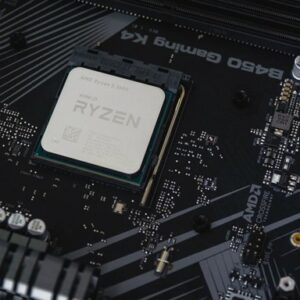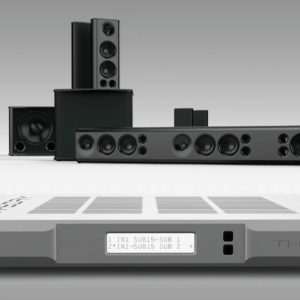A simple congratulating approach to AV control
As someone who used to live in control programming spaces all day, getting into a new system always took a minute. We need to come up with a universal “you are here” point in control systems. Even for configurating systems. The same was true when I entered the Kramer control interface. Once I got into the system and started in the main area, called Manager, I was off to the races.
Find out more about Kramer Control at AV Network Nation
I’ve programmed systems with logic flow, writing code, and configurating. Kramer control falls into the configurating column. That doesn’t make it automatically good or bad. Just understanding the requirements before starting is helpful.
For the purposes of this review and demo I deployed three Kramer SL-240C units into various offices here at AVNation. In those offices we had an Epson PLE20 as well as Sony BluRay players. That way I could test both RS-232 as well as IR control. One of the Epson projectors we also controlled via IP.
Building Project
Putting together the control project was simple and straightforward; once you figured out where everything was. In order to start putting the parts and pieces you have to launch “Builder” from the Manager interface. For me, it wasn’t an intuitive experience. Now, one caveat. I did NOT read the manual. At all. The only time I referenced the manual was when I really could not figure out a particular part. Had I RTFM first, it may have gone a bit easier. And, if you don’t know what RTFM means, call your favorite tech support and ask.
Once inside Builder, the going was easy. Both the projector and player drivers were available. According to Kramer, had they not been available it would take anywhere from 2 days to possibly a week to get one built. An aspect I appreciate in configurator systems is the option to build your own drivers. Kramer control has this. When you add a device you can choose to add your own. This will take you to a Device Driver builder. It’s a nice addition. The Device Driver builder puts Kramer on a professional standing as opposed to other configurators who don’t give you that option.
Once the “room” was outfitted with devices I went to create the user interface. Creating the user interface is the one area that drove me to the manual. Developing pages inside Kramer control was not intuitive for me personally. In addition, there are limitations in the overall look and feel. I did use the stock graphics. I would recommend creating your own backgrounds, graphics, and buttons and importing them. Making your own will give you a bit more control and creativity.
An aspect of Kramer control that I’ve only experienced one other time is the copying of completed rooms. You can select an entire “Space” and copy the entire project to a new Space. Once my original room was done I copied it to the other two rooms, adjusting the code for one of the projectors to be controlled over IP. In addition to copying a room you can also make a reference system. The reference system is more than a copy. It’s a copy that continually references the master. In that way, you only have to make one change then all the, classrooms for example, are updated with the new code.
Rollout Kramer Control
Kramer control is an IP-based system. The brains were connected to the network and then their individual devices. We did not have a touch panel to control the systems so I launched the computer/web interface. The systems worked consistently well over the course of three days. We powered on and off both projectors and players and created global shutdowns at the end of the day. The ability to control the other rooms from one location was a nice benefit for this test. However, it’s something I would be careful of for large deployments. It’s unwise to give the professor in one lecture hall control over someone else’s room technology.
Another part of the cloud-based system of Kramer control was the configurator. I hesitate to call it the software because at no time did I download a program. All of the work was done on the Kramer website. Kramer says they prefer Chrome browsers but will also support Firefox. This means a few things. The first is that I can use a Mac (my preference), PC, Chromebook, or Linux machine. It doesn’t matter the hardware as the service lives in the cloud. The second part is the continual backing up of the program. Backing up to the cloud ensures you don’t lose any work. Finally, someone can come up behind you and finish the job without needing your computer. If the files live in the cloud then your co-workers can get access.
The cloud based approach is a new one for me. There are half dozen other control systems I’ve used and programmed or configured. Leveraging the cloud to not only store but also program within is an advantage. There is no software to keep updated, and a team of programmers can work remotely on the same project. In addition, you don’t have to send a team of techs to a job site. During COVID especially, this is important for keeping your clients and employees safe.
Overall review of control platform
As a programmer, the configuration space was straightforward and relatively simple to get comfortable. What wasn’t intuitive I could look up in the manual. As an integrator, the cost is competitive for the hardware and you will certainly save on the costs of programming time. Kramer has several deployments you can talk with to get a sense of how the system holds up over months of use. Kramer control should certainly be in your toolbox of control options.
Programming/Configurating – 4 out of 5 stars
User Interface – 3 out of 5 stars
Control Operations – 4 out of 5 stars
Tim Albright is the founder of AVNation and is the driving force behind the AVNation network. He carries the InfoComm CTS, a B.S. from Greenville College and is pursuing an M.S. in Mass Communications from Southern Illinois University at Edwardsville. When not steering the AVNation ship, Tim has spent his career designing systems for churches both large and small, Fortune 500 companies, and education facilities.









